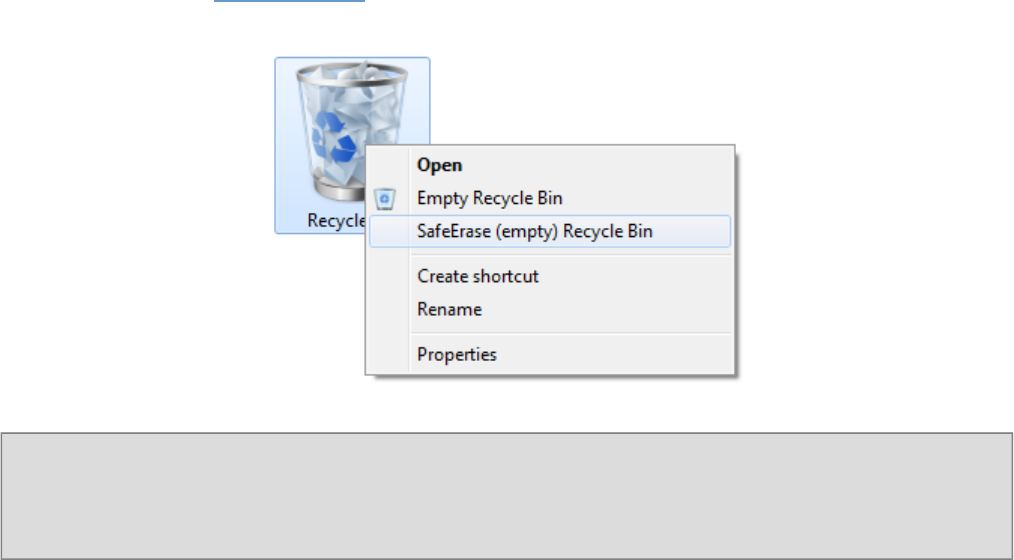Installation guide
Table Of Contents
- About O&O SafeErase 5
- Features at a glance
- New and enhanced functions
- SafeErase files and folders
- SafeErase hard disks and partitions
- SafeErase free disk space
- SafeErasing the entire computer
- SafeErase system drives
- Use O&O SafeErase via right-clicking
- Method of deletion
- Securely move files and folders
- SafeErase data from the Windows Recycle bin
- Start from the command line
- Manage individual deletion lists
- SafeErase temporary Windows and program files
- SafeErase temporary Internet files
- Reports
- Supports multi core processors
- Important note before program use
- Basics on data deletion
- The differences between the Editions
- Terminology
- Features at a glance
- System requirements
- Installation and licensing
- Getting started
- Start O&O SafeErase (user interface)
- Start the analysis of your drives
- Clean computer
- SafeErase files and folders
- SafeErase hard disks and partitions
- SafeErase free disk space
- SafeErase temporary Windows and program files
- SafeErase data from the Windows Recycle bin
- SafeErase temporary Internet files
- Cancel deletion
- Securely move files and folders
- SafeErase data from Solid State Drives (SSDs)
- Reports
- Method of deletion
- Manage individual deletion lists
- Settings
- SafeErasing the entire computer
- Use O&O SafeErase via right-clicking
- Start from the command line
- Frequently asked questions
- Support and Contact
- End user license agreement 3.2 (EULA)
- Bookmarks

Use O&O SafeErase via right-clicking
O&O SafeErase - 38
SafeErase data from the Windows Recycle Bin via right-clicking
Select the Recycle Bin and right-click on it to view the context menu. There you can click on SafeErase (empty)
Recycle Bin.
1. O&O SafeErase will then ask you to proceed selecting the deletion method. More about this can be found in the
chapter regarding Deletion methods.
2. SafeErase now starts the deletion process.
Via right-clicking for Recycling Bin with SafeErase Option
Important! Windows diverts only a set amount of disk space to Recycle Bin. When the total size of it files excess
this set amount, the oldest data are deleted. This deletion method, however, is still the Windows' standard and there-
fore not secure. In case files were deleted from the Windows Recycle Bin, this function would be the only possibility
to make sure they were securely overwritten.










